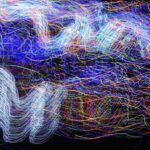Schilder, noted chiefly for his studies of schizophrenia and the body image, was bom in Vienna and received his medical degree at the city’s university. In his first position, as assistant physician at the University Hospital in Halle, he studied different types of personality disintegration, such as depersonalization and double consciousness, and also investigated pathological conditions of the nervous system. Among his contributions in the latter field was a classic description of encephalitis periaxalis diffusia, now called Schilder’s disease. See demyelinating DISORDERS.During the latter part of this period, he turned his attention to the Freudian theory and to the subject of schizophrenia. These two interests came together when he made an attempt to discover the form and content of schizophrenic thought by applying his extraordinary ability to communicate with deeply psychotic patients. The results of these observations were reported in Wann und Erkenntnis (Delusion and Knowledge), which contains a comparative analysis of the dynamics of schizophrenia and primitive thought processes.After serving in the Austrian Army during World War I, Schilder worked at hospitals and taught at the University of Vienna for ten years. In 1928 Adolf Meyer invited him to work and lecture at the Henry Phipps Psychiatric Clinic, and in the following year he was appointed Clinical Director of the Psychopathic Division of Bellevue Hospital in New York. While at Bellevue he married Dr. Loretta Bender, with whom he collaborated on many outstanding research projects in the fields of neurology. psychiatry, and psychopathology. His brilliant career was suddenly brought to an end when he was killed in an automobile accident at the age of fifty-four.Schilder made significant contributions in many areas and exerted a strong and lasting influence on his disciples in Vienna and in this country. The titles of his later works indicate the scope of his activities: Soul and Life (1923), Medical Psychology (1924), Hypnosis (1927), Introduction to a Psychoanalytic Psychiatry (1928), Brain and Personality (1931), The Image and Appearance of the Human Body (1935), and Psychotherapy (1938). Three other volumes were published posthumously, Contributions to Developmental Neuropsychiatry, Mind: Perception and Thought in Their Constructive Aspects (1942), and Goals and Desires of Man (1942).More specifically, Schilder developed the important but neglected concept of body image, and made it the center of a psychology of the human personality, linking it to the Freudian concept of the ego, narcissism, and libido. In his writings he also presented a penetrating criticism of Freud’s concept of the death instinct; analyzed the dreams of epileptics, showing that they contained a rebirth theme; and explained the psychology of mania. Although he recognized and utilized psychoanalytic concepts, his general approach can be described as holistic, since he maintained that the organic and psychological viewpoints must both be recognized, and that an overevaluation of either of them would lead to useless argument. One of the best illustrations of this approach is found in his attempts to interpret organic psychoses along psychoanalytic lines.In his views on therapy, Schilder also departed from the orthodox Freudian approach. He joined forces with Adler, Sullivan, Homey, and others who recognized the importance of the social milieu in both the etiology and treatment of neurosis. He therefore put less emphasis on the analysis of instinctual drives and the process of bringing unconscious material into consciousness, and more on the social and cultural origin of neurotic symptoms. His recognition of social factors also led to an interest in group therapy. He found that group treatment brought many problems to light that were not illuminated by individual therapy, especially attitudes toward family ideals, ideologies, and body concepts. To further this process, he made two innovations: he asked each group patient to answer questionnaires and to write a “free association” autobiography. These procedures provided material which could be used in stimulating discussion and in guiding the therapist’s interpretation.These are but samples of the creative work of this remarkable man, whom Fritz Wittels described in these terms: “A veritable Faustian man, he worked without rest and apparently without strain in many fields. There are few neurological or psychiatric problems which did not interest him at one time or other and which were not enriched by his approach” (1941).












